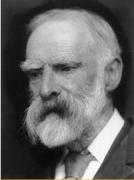|
|
||||||||||||||||||||||||
 |
Featured person
Recently added |
Henry Smith (1859 - 1948): |
||||||||||||||||||||||
Henry Smith was a leading figure in the field of ophthalmology, who spent his career in the Indian Medical Service. Though his medical duties and activities were wide-ranging he became particularly known for having developed new surgical techniques for treating degenerative eye conditions, especially cataracts, one of which was named after him.
Known to many as Harry Smith, he was born in Clogher, County Tyrone, and educated at Queen's College, Galway, where he graduated with first class honours. He joined the Indian Medical Service in 1890. He would spend three decades in the Punjab, mainly in Jullundur; he became known to many as "Jullundur Smith". His various duties were administrative as well as purely medical, and included acting as superintendant of a local jail. Much of his surgical work was urological as well as ophthalmological. Under Smith, the average number of cataract operation performed rose from several hundred to two or three thousand; since such operations were only carried out during certain times of the year (due to fear of increased postoperative infection during warmer weather), the average daily number could be as high as 100, thus necessitating a faster operative technique; specifically, a technique which did not require a second operation. Smith favoured what was then a relatively new technique, "intracapascular" surgery, in which the eye's natural crystalline lens which has clouded to form a cataract, is removed complete with the capsule which holds it. The cornea, which enables some 70% of vision to be retained, is left in place. Smith varied the operation to ensure that the patient retained control of the orbicularis oculi muscle, the muscle which has the vital function of closing the eye. Based on Smith's work, for roughly the next 60 years cataract surgeons worldwide switched to removing the lens within its capsule until a new wave of technology, which brought improved visualization through operating microscopes and new methods of breaking up the lens, caused the return to extracapsular methods.
Smith wrote up this technique in several articles and a book, which was published in 1910 (second edition 1928), The Treatment of Cataract and Some Other Common Ocular Affections. His method, which became known as the "Indian" or "Smith Indian" method, was widely accepted as a satisfactory technique until mid-century, when, as is the way in science, his advances were themselves advanced upon. However, his book was in its day regarded as a classic, and his development of intracapascular cataract surgery assured him of his place in ophthalmological history. By 1910 he was a Lieutenant Colonel, Chief Medical Officer of the Province, Companion of the Order of the Indian Empire, and Honorary Surgeon to the Viceroy.
Several accounts have been left of his operating conditions. The "surgery" was rather rough-and-ready, in a bungalow open to the street, so that he often operated with spectators watching over his shoulder. Although a large and powerfully-built man, like all successful surgeons he had great delicacy of touch. One feature of his operations was that he would carry them out while smoking a cheroot. He once explained to a medical colleague that if he had to lay down his cheroot, it was a bad operation; and if his cheroot went out, it was a damned bad operation.
He retired in 1921, though spent one more year in India, 1924-1925 to prepare the updated edition of his book, in which he addressed with his tremendous self-assurance some commentaries of critiques of his method. Smith, who married an Indian Medical Service colleague in 1898, with whom he had two sons, retired back to Clogher, County Tyrone, where he died in his old home and birthplace. The then leading newspaper the Indian Pioneer noted: "He was big, mentally, morally and physically and he operated on thousands upon thousands for two great Indian afflictions, cataract and stone. India mourns his going, the world honours him."
| Born: | 1859 |
| Died: | 1948 |
| Richard Froggatt |
| Acknowledgements: Wesley McCann |
| Bibliography: http://www.whonamedit.com/doctor.cfm/3024.html; MS Nirankari & MC Maudgal : “A Modification of the Smith Indian Technique of Intracapsular Cataract Operation”, British Journal of Ophthalmology (1957) 41, 487; Gray’s Anatomy; http://archopht.ama-assn.org/cgi/reprint/39/5/676.pdf; http://archopht.ama-assn.org/cgi/content/full/123/4/544 |


Home | Our Policies | Plaques | Browse | Search | Sponsors | Links | Help | Contact
Privacy & Disclaimer | Cookie Policy | Site Map | Website Design By K-Point
© 2024 Ulster History Circle









